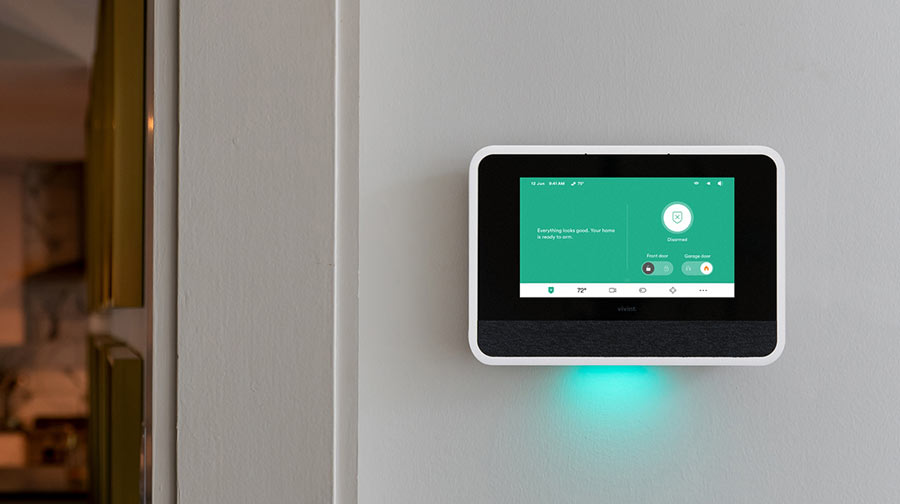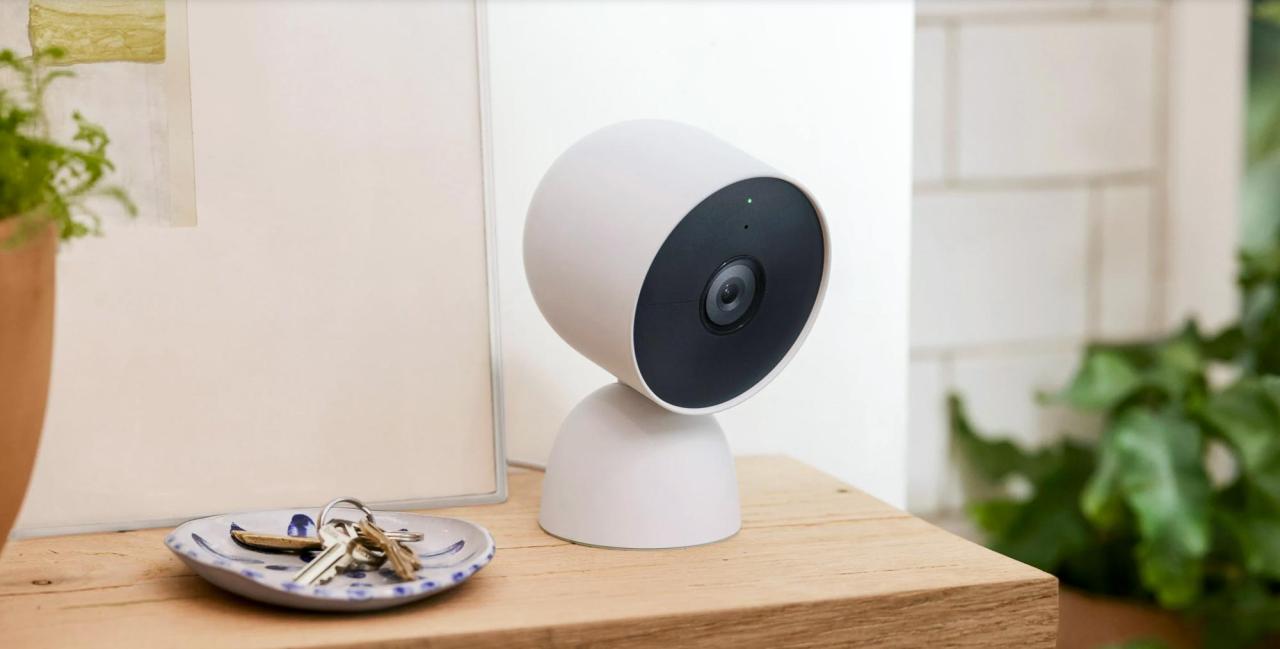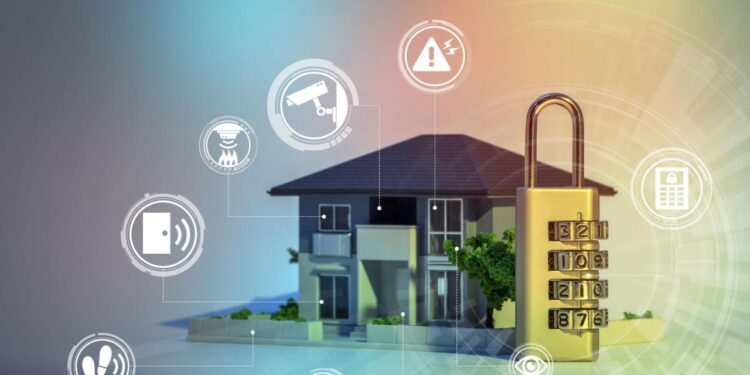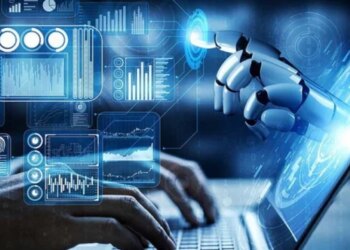In an increasingly interconnected world, the concept of security has evolved dramatically. No longer limited to physical locks and guards, it now encompasses the intricate protection of digital assets, personal data, and critical infrastructure against a constantly evolving landscape of threats. The emergence of smart security solutions, powered by Artificial Intelligence (AI), the Internet of Things (IoT), and advanced analytics, is at the forefront of this evolution, offering unprecedented levels of vigilance, responsiveness, and automation. This isn’t just about deterring criminals; it’s about building resilient systems that can anticipate, detect, and neutralize threats with intelligent precision. This comprehensive article delves into the intricate world of smart security, dissecting its core technological components, the profound benefits it delivers, the significant challenges it faces, and the exciting future it promises for fortifying our physical and digital domains.
Deconstructing “Smart” in Security Solutions

“Smart” in security refers to systems that go beyond passive monitoring or simple alarms. These solutions actively learn, adapt, and make intelligent decisions, often without direct human intervention, to provide more effective and proactive protection. They represent a fusion of traditional security principles with cutting-edge technology.
A. Artificial Intelligence (AI) and Machine Learning (ML): These are the brains behind smart security, enabling systems to learn, recognize patterns, and make informed judgments.
- Behavioral Analytics: AI algorithms analyze typical patterns of activity (e.g., normal network traffic, usual human movements in a building). Deviations from these norms can trigger alerts, helping to detect anomalies that might indicate a threat.
- Facial Recognition: Used in access control and surveillance, AI can identify authorized individuals and flag unauthorized ones. It can also be used for identifying persons of interest from databases.
- Object Recognition: AI can distinguish between various objects in camera feeds (e.g., a person, an animal, a package, a weapon), reducing false alarms and providing more contextual alerts.
- Predictive Threat Intelligence: AI can analyze vast amounts of global threat data, identify emerging attack patterns, and predict potential vulnerabilities before they are exploited.
- Natural Language Processing (NLP): Used in cybersecurity for analyzing threat intelligence feeds, understanding phishing attempts, and interpreting security logs.
B. Internet of Things (IoT) Devices: These are the interconnected sensors and devices that form the eyes, ears, and hands of smart security systems, gathering real-time data from the environment.
- Smart Cameras: High-resolution cameras with built-in AI for video analytics, motion detection, facial recognition, and anomaly detection.
- Access Control Systems: Smart locks, biometric readers (fingerprint, iris, voice), and card readers that use network connectivity and often AI for authentication and granular access management.
- Environmental Sensors: Detect smoke, carbon monoxide, gas leaks, floods, temperature extremes, and even sound anomalies (e.g., breaking glass).
- Motion Sensors: Advanced PIR (Passive Infrared) and microwave sensors with AI to differentiate between pets and humans, reducing false alarms.
- Connected Alarms: Integrate with central monitoring stations and smartphone apps, providing instant alerts and remote control.
C. Big Data Analytics: Security systems generate enormous amounts of data (video feeds, logs, sensor readings). Big data technologies are essential for storing, processing, and analyzing this information to extract meaningful insights.
- Security Information and Event Management (SIEM): Aggregates and analyzes security logs from various sources across an IT infrastructure to detect and prioritize threats.
- Threat Hunting: Data analytics helps security analysts proactively search for hidden threats within vast datasets.
- Forensic Analysis: Post-incident, big data analytics aids in reconstructing events, identifying attack vectors, and understanding the scope of a breach.
D. Connectivity and Cloud Computing: Robust network infrastructure and cloud capabilities are fundamental for real-time data transfer, processing, and remote management of smart security solutions.
- 5G and High-Speed Broadband: Enable rapid data transfer from a multitude of sensors, crucial for real-time video streaming and AI analysis.
- Cloud-Based Security Platforms: Provide scalable storage for video footage and logs, centralized management of devices, and powerful cloud-based AI processing capabilities.
- Edge Computing: Processing data closer to the source (e.g., on the camera itself) reduces latency, enhances privacy, and minimizes bandwidth usage, especially important for real-time video analytics.
E. Automation and Orchestration: Smart security systems automate responses and orchestrate complex actions based on detected threats or predefined rules.
- Automated Alerts: Instant notifications to users, security personnel, or emergency services upon threat detection.
- Automated Responses: E.g., locking doors, activating alarms, triggering fire suppression systems, or isolating compromised network segments.
- Workflow Automation: Automating routine security tasks like patching vulnerabilities, updating firewalls, or running security scans.
Diverse Applications of Smart Security Solutions

Intelligent security is being applied across a vast array of sectors, enhancing protection from homes to national infrastructure.
Home Security
Transforming residential protection from simple alarms to comprehensive, intelligent monitoring.
- Smart Home Security Systems: Integrated systems featuring smart cameras, door/window sensors, motion detectors, and smart locks, all controllable via smartphone apps and voice assistants.
- AI-Powered Video Doorbells: Recognize faces, differentiate between people and packages, and alert homeowners to activity at their front door, even when they’re away.
- Remote Monitoring and Control: Homeowners can view live camera feeds, arm/disarm systems, and grant access remotely.
- Environmental Monitoring: Sensors detect smoke, CO, water leaks, and temperature extremes, preventing damage and ensuring family safety.
- Virtual Guarding: AI systems can simulate occupancy when residents are away by randomly adjusting lights and blinds.
Commercial and Enterprise Security
Securing businesses, offices, and commercial properties with advanced, scalable solutions.
- Intelligent Video Surveillance (IVS): AI-powered cameras monitor large areas, detect unusual behavior (e.g., loitering, trespassing, unattended bags), count people, and provide heatmaps of activity.
- Smart Access Control: Biometric access, mobile credentials, and intelligent visitor management systems enhance security and streamline entry/exit.
- Intrusion Detection Systems: Sophisticated sensors detect unauthorized entry, often integrated with IVS for visual verification.
- Asset Tracking: IoT sensors monitor the location and condition of valuable assets within a facility or supply chain.
- Incident Management Platforms: Centralized systems for logging, tracking, and resolving security incidents, often leveraging AI for faster triage.
Cybersecurity
Protecting digital assets, networks, and data from evolving cyber threats.
- AI-Powered Threat Detection: AI analyzes network traffic, user behavior, and system logs to identify anomalies and zero-day threats that traditional signature-based systems might miss.
- Automated Incident Response: AI can automatically quarantine malware, block malicious IP addresses, or isolate compromised systems to contain breaches.
- User and Entity Behavior Analytics (UEBA): AI profiles normal user behavior and flags suspicious activities (e.g., an employee accessing unusual files late at night).
- Vulnerability Management: AI can scan for vulnerabilities in software and networks, prioritize patches, and even suggest remediation steps.
- Phishing Detection and Prevention: AI analyzes emails and web content to identify and block sophisticated phishing attempts.
Public Safety and Smart Cities
Leveraging smart tech for urban security and emergency response.
- Intelligent Public Surveillance: City-wide camera networks with AI for crowd monitoring, traffic analysis, and identifying suspicious activities in public spaces (while balancing privacy concerns).
- Emergency Response Optimization: AI can analyze real-time data (e.g., traffic conditions, sensor data from buildings) to guide first responders to incident sites faster and more efficiently.
- Predictive Policing: AI models analyze historical crime data to predict potential crime hotspots, allowing police to deploy resources more effectively (controversial due to bias concerns).
- Disaster Management: IoT sensors and AI predict natural disasters (floods, earthquakes) and facilitate early warning systems and coordinated emergency response.
Critical Infrastructure Protection
Safeguarding essential services like power grids, water treatment plants, and transportation networks.
- Perimeter Security: Advanced sensors, drones with thermal cameras, and AI analytics monitor borders and critical facility perimeters for intrusions.
- Cyber-Physical Security: Protecting industrial control systems (ICS) and operational technology (OT) networks from cyberattacks that could disrupt physical operations.
- Predictive Maintenance: IoT sensors monitor the health of infrastructure components, predicting failures and preventing service disruptions due to security-related incidents.
- Remote Monitoring and Control: Securely monitor and control critical infrastructure assets from remote locations.
The Transformative Benefits of Smart Security Solutions
The adoption of intelligent security technologies brings about a profound shift, offering advantages that reshape our approach to protection in both physical and digital realms.
A. Enhanced Proactive Threat Detection:
- Early Warning Systems: AI’s ability to analyze vast amounts of data and identify subtle anomalies allows for the detection of threats before they escalate into major incidents.
- Reduced False Positives: AI’s intelligence minimizes irrelevant alerts, allowing security personnel to focus on genuine threats.
- Predictive Capabilities: AI can forecast potential attacks or vulnerabilities, enabling organizations to strengthen defenses preemptively.
B. Increased Efficiency and Automation:
- Automated Response: Routine security tasks and initial responses to threats can be automated, significantly speeding up reaction times.
- Optimized Resource Allocation: AI helps prioritize threats and direct human security personnel to where they are most needed, maximizing efficiency.
- Reduced Human Error: Automation eliminates human fatigue and inconsistencies in monitoring and response.
C. Superior Accuracy and Precision:
- Granular Analysis: AI can process and interpret data with a level of detail and speed impossible for humans, leading to more accurate threat identification.
- Improved Surveillance: Smart cameras provide higher quality, actionable intelligence from video feeds, even in challenging conditions.
- Precise Access Control: Biometric systems ensure only authorized individuals gain entry, with far greater precision than traditional methods.
D. Significant Cost Savings:
- Lower Operational Costs: Automation reduces the need for constant human monitoring in some areas, potentially lowering labor costs.
- Reduced Damage and Downtime: Proactive detection and rapid response minimize the financial impact of security breaches, theft, or accidents.
- Optimized Security Investments: Data-driven insights help organizations allocate their security budgets more effectively.
E. Enhanced Scalability and Adaptability:
- Flexible Deployment: Cloud-based smart security solutions can be easily scaled up or down to meet changing security needs.
- Continuous Learning: AI systems learn and adapt to new threats and environmental changes, ensuring ongoing effectiveness.
- Remote Management: Systems can be monitored and managed from anywhere, enhancing operational flexibility.
F. Improved Personal and Public Safety:
- Safer Environments: Smarter surveillance and emergency response systems contribute to safer homes, businesses, and public spaces.
- Faster Emergency Response: Automated alerts and data sharing with emergency services can cut down response times significantly.
- Peace of Mind: Knowing that intelligent systems are constantly monitoring and protecting assets provides greater peace of mind for individuals and organizations.
Navigating the Challenges of Smart Security Adoption
Despite their compelling advantages, the widespread and ethical implementation of smart security solutions faces several significant hurdles that require careful consideration and strategic planning.
A. Data Privacy and Ethical Concerns:
- Mass Surveillance Risks: The extensive use of smart cameras and AI for facial recognition or behavioral analytics in public spaces raises serious privacy concerns and fears of mass surveillance.
- Bias in AI Algorithms: If AI models are trained on biased data, they can lead to discriminatory outcomes in areas like facial recognition or predictive policing, disproportionately affecting certain demographic groups.
- Consent and Transparency: Ensuring individuals are aware of how their data is being collected, stored, and used, and obtaining informed consent, is a complex ethical and legal challenge.
- Misuse of Technology: The potential for smart security tools to be misused by malicious actors or authoritarian regimes for purposes beyond legitimate security.
B. Cybersecurity Vulnerabilities of the Systems Themselves:
- Attack Surface Expansion: Every connected smart security device is a potential entry point for hackers. A compromised camera, smart lock, or network sensor can provide access to sensitive data or the ability to disrupt systems.
- IoT Security Gaps: Many IoT devices are designed with insufficient security features, making them easy targets for exploits.
- Supply Chain Attacks: Vulnerabilities can be introduced at various points in the supply chain of smart security hardware and software.
C. High Initial Cost and Integration Complexity:
- Significant Investment: Implementing comprehensive smart security systems, especially for large enterprises or smart cities, involves substantial upfront capital expenditure.
- Interoperability Issues: Integrating diverse smart security devices and platforms from different vendors can be technically challenging due to a lack of universal standards.
- Skilled Workforce: Requires specialized IT and security personnel to deploy, manage, and maintain these complex systems.
D. Regulatory and Legal Frameworks:
- Lagging Legislation: Laws and regulations often struggle to keep pace with the rapid advancements in AI, IoT, and data collection, leading to legal ambiguities.
- Varying Jurisdictions: Laws regarding surveillance, data retention, and biometric data differ significantly across countries and regions, creating a complex compliance landscape for global operations.
- Liability: Determining liability when a smart security system fails or contributes to an incident is a complex legal question that requires clear frameworks.
E. False Alarms and System Reliability:
- AI Imperfections: While AI reduces false positives, it’s not perfect. Overly sensitive systems can still generate numerous false alarms, leading to “alert fatigue” for security personnel.
- Environmental Factors: Performance of sensors and AI can be affected by adverse weather, lighting conditions, or environmental noise.
- Power and Connectivity Dependence: Smart security systems rely heavily on stable power and network connectivity. Outages can render them ineffective.
F. Public Acceptance and Trust:
- Fear of Surveillance: Public skepticism and resistance due to concerns about privacy erosion and a feeling of being constantly watched.
- Lack of Transparency: If systems are deployed without clear communication about their purpose, data handling, and safeguards, public trust can erode quickly.
- Black Box Problem: The inability to fully understand how certain AI algorithms arrive at their decisions (the “black box” problem) can hinder trust and accountability.
The Future Trajectory of Smart Security
The evolution of smart security is relentless, pointing towards an increasingly proactive, integrated, and self-healing protective layer across our physical and digital worlds.
A. Autonomous Security Agents (Robots and Drones): We’ll see an increase in autonomous security robots for patrolling large areas (warehouses, campuses, borders) and drones for aerial surveillance, rapid incident assessment, and even delivering vital supplies during emergencies. These will be tightly integrated with AI-powered command centers.
B. Predictive and Proactive Defense: Security systems will move from reactive responses to highly predictive capabilities. AI will analyze vast datasets to anticipate threats, identify emerging attack patterns (e.g., in cyber warfare or physical unrest), and recommend preemptive actions before an attack even begins.
C. Seamless Convergence of Physical and Cyber Security: The lines between physical security (doors, cameras) and cybersecurity (networks, data) will completely blur. Integrated platforms will provide a holistic view of threats across both domains, enabling coordinated responses to complex cyber-physical attacks.
D. Behavioral Biometrics and Continuous Authentication: Beyond static fingerprints or facial scans, AI will use behavioral biometrics (e.g., typing rhythm, gait analysis, voice patterns) for continuous, passive authentication, ensuring that only authorized users remain authorized throughout their interaction with systems or entry into secure zones.
E. Self-Healing and Adaptive Security Systems: Future smart security will be “self-aware” and “self-healing.” AI will enable systems to detect their own vulnerabilities, automatically apply patches, reconfigure defenses, and adapt to new attack vectors in real-time without human intervention.
F. Contextual Awareness and Hyper-Personalization: Security systems will become highly context-aware, understanding individual user roles, time of day, location, and even emotional state (through advanced biometrics) to provide highly personalized and adaptive security policies.
G. Quantum-Resistant Security: As quantum computing advances, threatening current encryption methods, smart security solutions will integrate quantum-resistant cryptographic algorithms to protect critical data and communications.
Conclusion
The intelligent revolution in security is not just a technological upgrade; it’s a fundamental reimagining of how we protect our assets, our data, and our communities. By embracing smart security solutions, we are building a more resilient, responsive, and ultimately, safer future against an ever-evolving landscape of threats. The challenges are significant, but the imperative to safeguard our increasingly interconnected world makes this intelligent transformation an absolute necessity.











